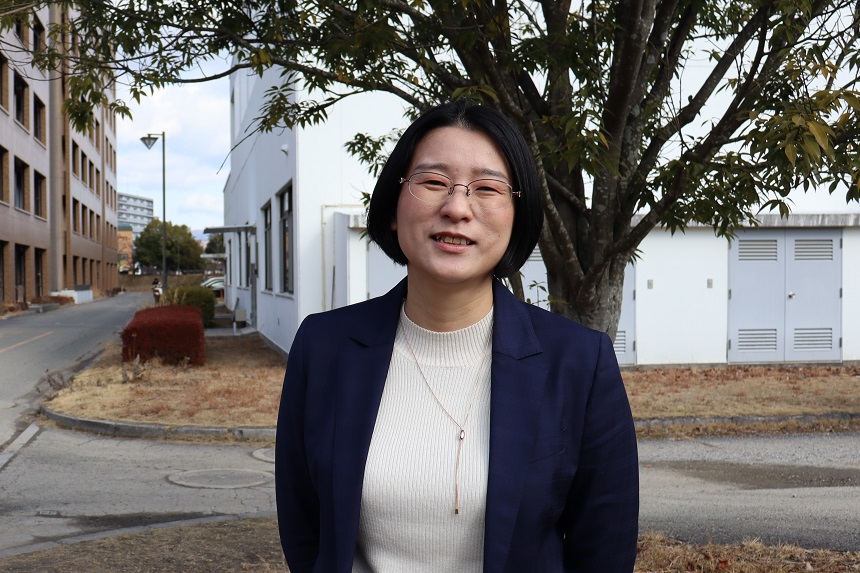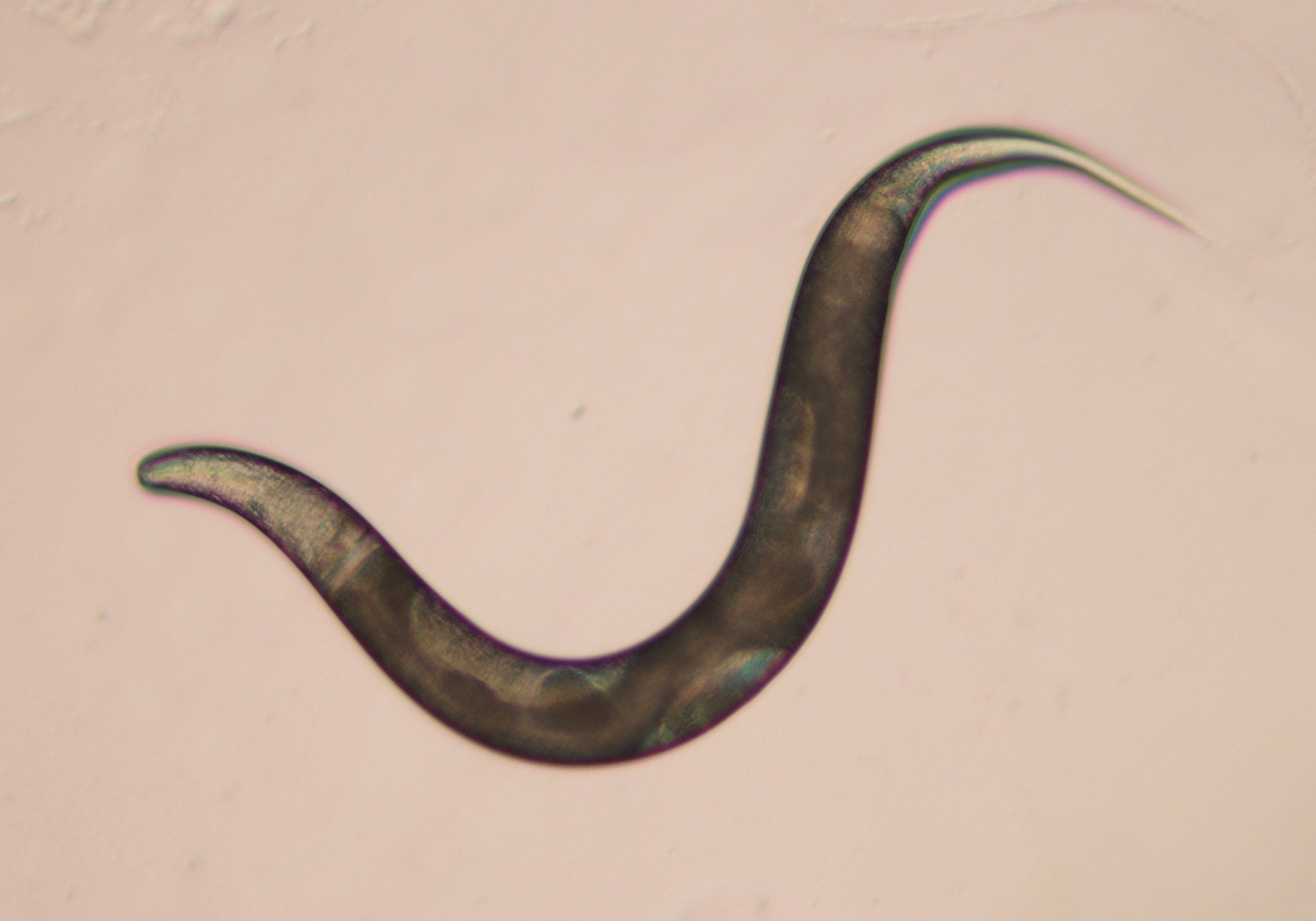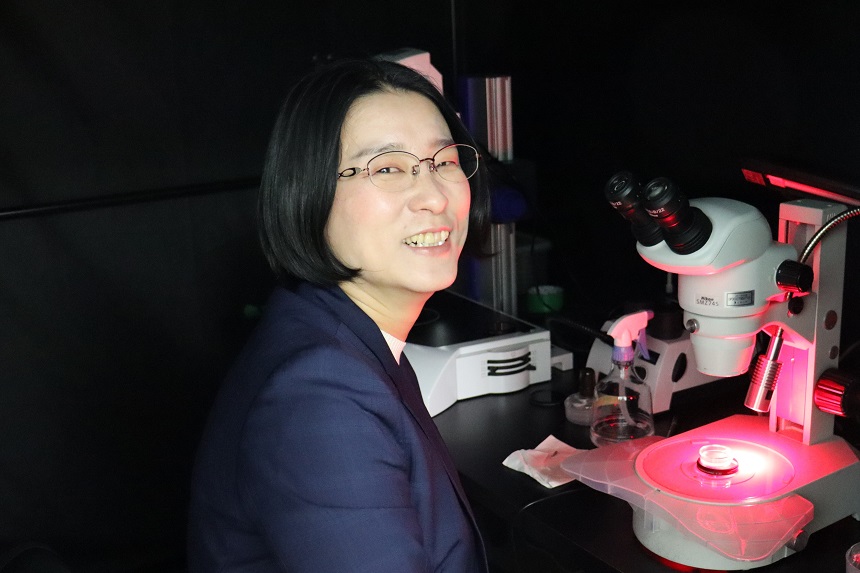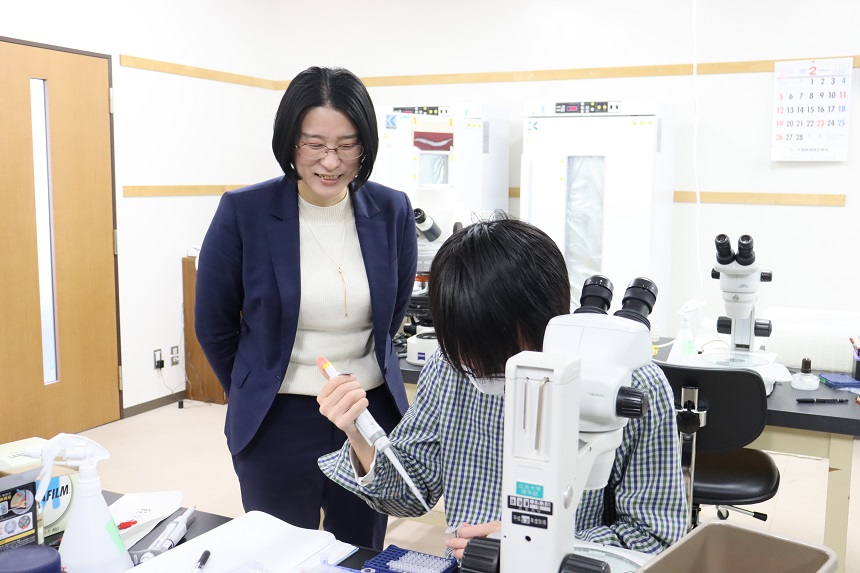Interview of Associate Professor Misako OKUMURA
Researchers selected for JST FOREST in the FY2021

Aiming to advance the frontiers of photobiology by identifying a yet-undiscovered "fourth photoreceptor"
Researching organismal development and mechanisms of light perception with a central focus on light
I am a molecular biologist working on two thematic areas, development and neuroscience, using the nematode species Pristionchus pacificus (P. pacificus).
The first research theme, development, refers to the process by which a fertilized egg undergoes repeated cycles of cell division to become an adult. Normally, when two fertilized eggs contain different genetic information, they will naturally develop into adults with different shapes and characteristics. However, in the case of some organisms, two individuals (such as identical twins) can have the same genetic information but ultimately take on different shapes and characteristics depending on the environment in which they develop. One example is the organism I am studying, the nematode P. pacificus, which is known to develop either a “wide” or “narrow” mouth shape depending on its environment.
Although the mechanism that produces changes in the mouth shape of P. pacificus is not fully understood, my research team and I recently found that light plays a role as an environmental factor influencing the form of the mouth. More individuals developed a wide mouth when exposed to light, and more developed a narrow mouth when kept in darkness. We are currently continuing this research in order to determine the underlying mechanism.
Our second research theme, neuroscience, is also related to light. The goal of this project is to determine the mechanism by which P. pacificus senses light. This project was selected for a grant from the Japan Science and Technology Agency (JST)'s FOREST (Fusion Oriented REsearch for disruptive Science and Technology) program.

Nematode P. pacificus
Seeking to find the “fourth photoreceptor” of the nematode P. pacificus and determine its mechanism
Now I will discuss the details of the research project selected for the FOREST grant. Responding to light is critical to an organism’s survival. For example, because light is harmful to nematodes, P. pacificus tries to escape from light when exposed to it. In animals, light detection is mediated by photoreceptors that convert light into neural signals. To date, three major types of photoreceptors—called opsins, cryptochromes, and LITE-1—have been found in animals. Logically, P. pacificus should also have one of these receptors because it is able to recognize and escape from light. However, my research showed that P. pacificus has none of these known photoreceptors. In other words, P. pacificus appears to have a yet-undiscovered “fourth photoreceptor.” In this project, I hope to identify this unknown photoreceptor and determine the mechanism by which P. pacificus senses light.
The gene for this fourth photoreceptor must be present somewhere in the genome of P. pacificus. If that gene were damaged, the affected individual should stop responding to light. Therefore, we are currently inducing random genomic damage in a large number of P. pacificus and selecting light-unresponsive individuals. We have obtained several individual nematodes that do not respond to light and have been analyzing their genomes. As FOREST program projects are generally funded for seven years, we hope to complete the step of identifying the photoreceptor in the first half of the project and determine the mechanism by which light information is transmitted through this photoreceptor in the second half.

Observing the light avoidance behavior of nematodes under a microscope.
Striving to advance the frontiers of photobiology
If we successfully identify the unknown photoreceptor in this research project, we may discover a new mechanism of light recognition. This would advance the frontier of photobiology, leading to the discovery of new physiological functions as well as the development of new drugs and methods for cellular regulation. My ultimate goal is to pave the way for these new areas of photobiology.
Much remains unknown about interactions between light and living organisms, and research progress in this field could dramatically change how we think about these interactions. For example, when intracytoplasmic sperm injection is performed as an infertility treatment, the egg and sperm are handled under light conditions. However, this light might affect the egg and sperm in some way. Clarifying the effects of light in this situation could lead to development of safer fertility treatments. This shows how photobiology has a great future ahead of it.
As I conduct research, I often encounter outcomes that differ dramatically from my initial expectations. This is what makes research so exciting, as we can learn from the wisdom of nature which is beyond our imagination. It is important to conduct research carefully while avoiding being overconfident in my own knowledge and considering what the organisms are trying to convey to me. I would like to earnestly continue research on the themes of light and living organisms.



 Home
Home

